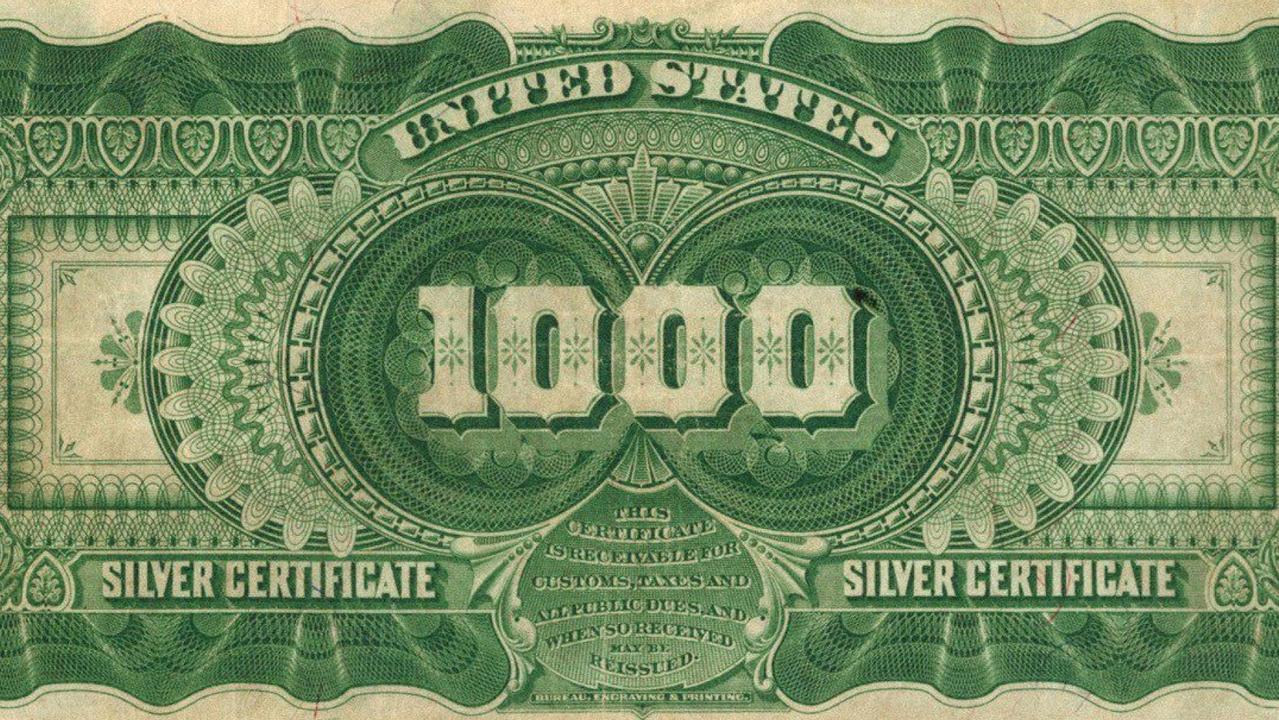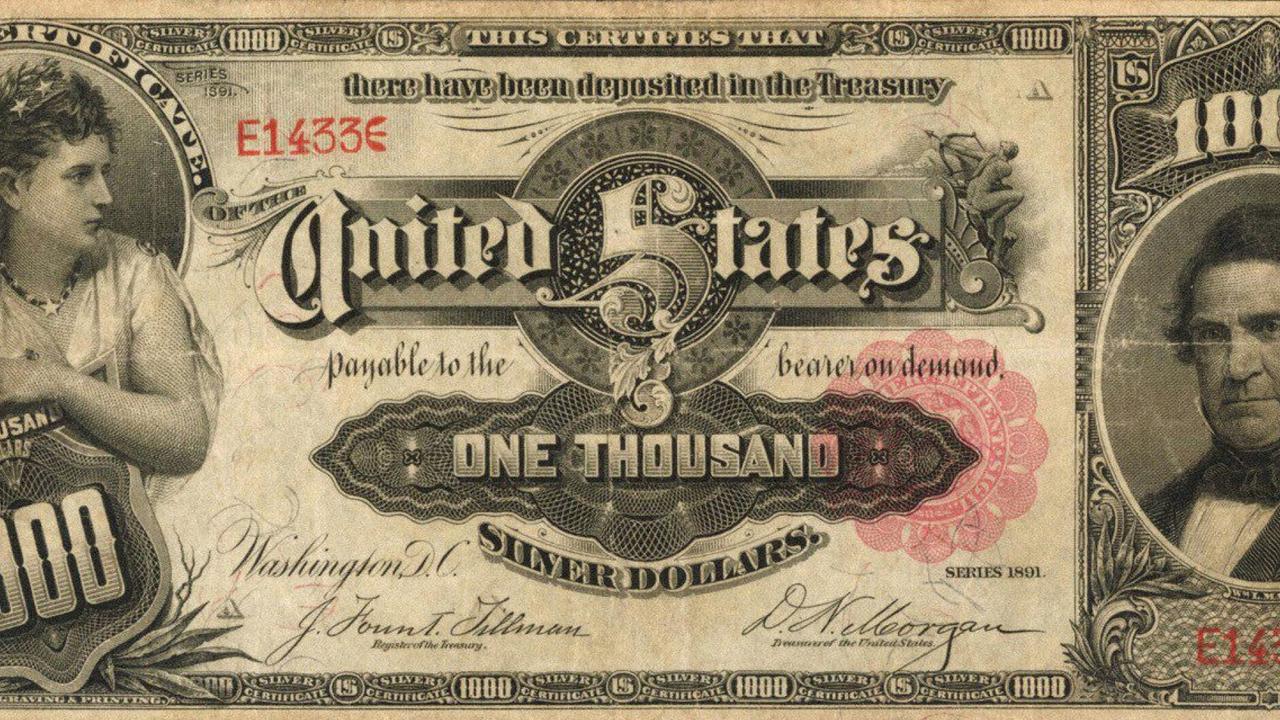Extremely rare ‘unicorn’ of US paper money expected to sell for $4 million
An extremely rare US currency note from the late 19th century — considered the “unicorn” of the currency — is about to make someone very rich.

An extremely rare US currency note from the late 19th century is expected to sell for up to $AU4 million ($US3 million) when it is auctioned next year.
The 1891 $1000 Silver Certificate is the only bill of its kind believed to exist in private hands, according to auction house Stack’s Bowers Galleries.
Known as the Marcy note, the bill features the portrait of former New York Governor William L. Marcy, who served as a senator and as secretary of war under President James Knox Polk.
Stack’s Bowers Galleries notes that the Marcy note is sometimes considered the “unicorn” of US money thanks to its unique design.

The bill, which has an estimated pre-sale value of $3 million to $4 million, is being offered at auction for the first time.
The note will be auctioned at the Whitman Spring Expo, which takes place in Baltimore between February 28 and March 3.
Another extremely rare $1000 bill described as the “Holy Grail of paper money” was recently sold at auction for just over $US2 million.
The 1890 Treasury Note is dubbed the “Grand Watermelon” on account of the large green zeros on the back of the bill. Major General George Meade, the commander of Union forces at the Battle of Gettysburg, is shown on the bill’s face.
This article originally appeared on Fox News and was reproduced with permission.



